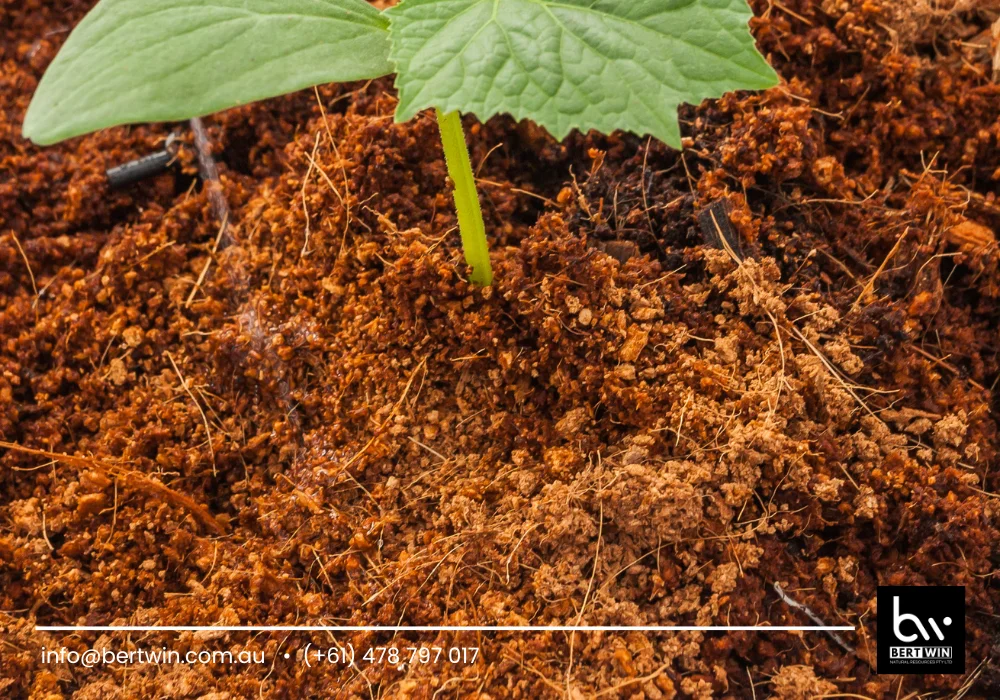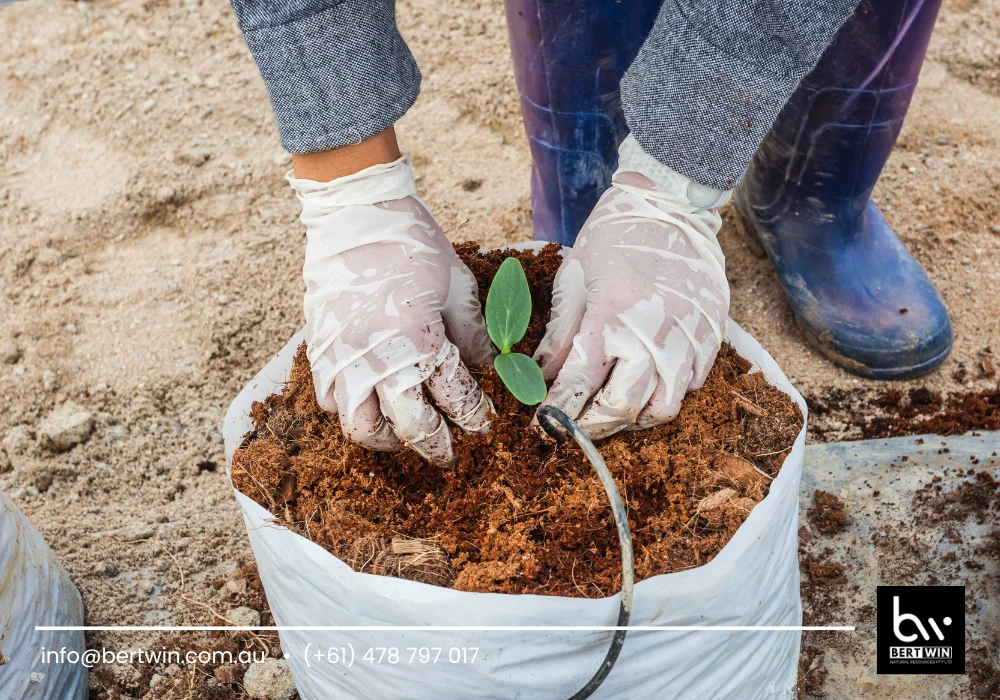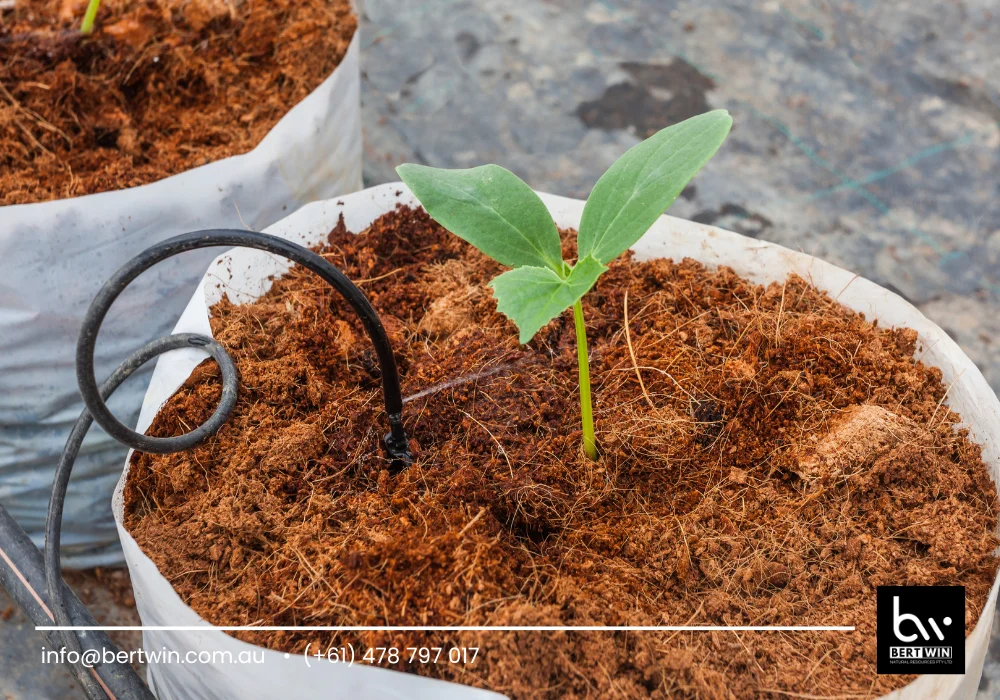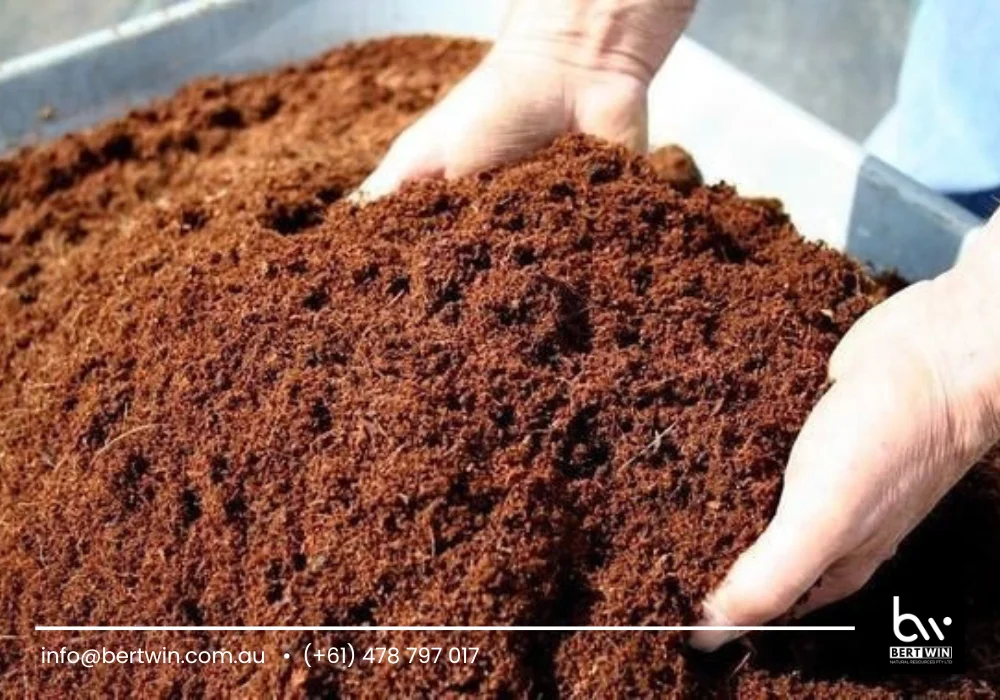
Did you know that coco peat can hold up to 10 times its weight in water? This makes it a game-changer for hydroponics. Coco peat for hydroponics offers excellent aeration and moisture retention, creating the perfect environment for plant roots. It’s eco-friendly and sustainable, making it a top choice among growers. Using coco peat can lead to healthier plants and higher yields. With its natural properties and improved water retention, it’s no wonder that more gardeners are turning to this versatile medium. Dive into the benefits of using coco peat and see how it can transform your hydroponic gardening experience.
Characteristics of Coco Peat
Composition and Structure
Coco peat for hydroponics is made from the husk of coconuts. The material consists of fine fibres and pith, giving it a spongy texture. It is often processed into blocks or bricks for easy handling, making coco peat for hydroponics a practical and efficient medium.
The structure allows for effective moisture retention while providing good support for plants. Its fibrous nature helps create a stable environment for roots.
Water Retention Abilities
Coco peat for hydroponics can hold up to eight times its weight in water. This property makes it ideal for hydroponic use, retaining moisture without becoming waterlogged. Plants benefit from consistent hydration.
The high water retention ensures that nutrients remain accessible to plant roots. This leads to healthier growth and higher yields.
Aeration and Drainage
Coco peat for hydroponics provides excellent aeration for plant roots. The structure allows air pockets to form, promoting oxygen flow. This is crucial for root health and prevents rot.
Good drainage is another key feature. Excess water drains away quickly, preventing over-saturation. This balance between aeration and drainage supports robust plant development.
pH and Nutrient Levels
Coco peat has a neutral pH, typically around 6 to 6.7. This range is suitable for most plants. It does not significantly alter nutrient availability.
However, coco peat may require supplementation with nutrients over time. Regular monitoring ensures optimal plant growth and health.

Benefits of Using Coco Peat
Sustainability and Eco-Friendliness
Coco peat for hydroponics is a renewable resource. It comes from the husk of coconuts, which are abundant in tropical regions. This material helps reduce waste by utilizing by-products from coconut processing. Many growers prefer it over peat moss, which depletes natural bogs. Using coco peat for hydroponics promotes sustainable gardening practices.
Enhanced Root Development
Coco peat for hydroponics provides excellent aeration and drainage. This allows roots to access oxygen easily. Healthy roots lead to stronger plants. Studies show that plants grown in coco peat have better growth rates compared to those in traditional mediums. The structure of coco peat retains moisture while preventing waterlogging. This balance supports optimal root development.
Resistance to Pests and Diseases
Coco peat has natural resistance to pests and diseases. It creates an unfavourable environment for harmful organisms. This property reduces the need for chemical pesticides. Many hydroponic growers report fewer issues with pests when using coco peat. Its sterile nature also means less risk of disease transmission between plants.
Types of Coco Coir Products
Coco Coir Blocks
Coco coir blocks are compressed forms of coir products. They expand when soaked in water. This makes them ideal for hydroponics. Each block can hold moisture effectively, ensuring plants receive enough water. They provide a stable environment for root growth.
Coco Chips and Croutons
Coco chips and croutons are larger pieces of coir. They offer excellent aeration in growing systems. These products improve drainage while retaining some moisture. Many growers prefer them for their ability to create a balanced medium. They prevent soil compaction, allowing roots to breathe.
Coco Fibre Mats
Coco fibre mats consist of tightly woven strands of coir. These mats support seed germination and plant growth. They provide a flat surface that retains moisture well. Many gardeners use these mats in vertical gardening setups. They also help control weeds while promoting healthy root development.
Suitable Plants for Coco Coir
Vegetables and Herbs
Coco coir works well for various vegetables and herbs. Leafy greens like lettuce and spinach thrive in this medium. These plants benefit from the excellent water retention of coco peat. Other herbs, such as basil and coriander, also grow effectively. They appreciate the aeration that coco coir offers.
Growing these plants in coco coir can yield a faster harvest. The medium allows roots to breathe while retaining moisture. This combination promotes strong plant growth.
Flowering Plants
Many flowering plants perform well in coco coir. Petunias and geraniums are popular choices among gardeners. These flowers enjoy the balanced moisture levels coco coir provides. The medium supports vibrant blooms and healthy foliage.
Orchids can flourish in coco coir. They require good drainage, which coco peat delivers. Using this substrate helps prevent root rot, a common issue with orchids.
Fruit-Bearing Plants
Fruit-bearing plants also thrive in coco coir. Tomatoes and peppers are two examples that show strong growth in this medium. They require consistent moisture, which coco peat supplies efficiently.
Strawberries are another excellent option for hydroponics using coco coir. They grow well when given proper nutrients and care. The lightweight structure of coco coir supports their delicate roots.

Best Practises for Using Coco Peat
Preparing and Conditioning
Coco peat requires proper preparation before use. Start by rinsing it thoroughly to remove excess salts. This step is crucial as high salt levels can harm plant growth. After rinsing, soak the coco peat in water for a few hours. This process helps it expand and become more manageable.
Conditioning also involves adding nutrients. Use a balanced fertiliser to enrich the coco peat. This ensures that plants receive essential minerals right from the start.
Mixing with Other Media
Mixing coco peat with other growing media enhances its performance. Common combinations include perlite or vermiculite. These materials improve aeration and drainage. A typical mix ratio is 70% coco peat to 30% perlite. This blend promotes healthy root development.
e growers prefer mixing coco peat with soil. This method can increase nutrient retention while still benefiting from coco’s properties. Adjust the ratio based on the specific needs of your plants.
Monitoring Moisture Levels
Maintaining the right moisture level is vital for plant health. Coco peat retains water well but can dry out quickly if not monitored. Regularly check moisture using your fingers or a moisture meter.
Aim for a consistent dampness without over-saturating the medium. Overwatering can lead to root rot, which is detrimental to plant growth. Adjust your watering schedule based on the plants’ needs and environmental conditions.
Summary
Coco peat is a game-changer for your hydroponics setup. Its unique characteristics make it an excellent choice for nurturing a variety of plants. You’ve seen the benefits, types of products, and best practices to maximise your results. This versatile medium not only supports plant growth but also promotes sustainability.
Now it’s time to put this knowledge into action. Experiment with coco peat in your hydroponic system and watch your plants thrive. Don’t hesitate to share your experiences and tips with fellow growers. Together, you can cultivate a greener future!

Frequently Asked Questions
What is coco peat?
Coco peat, also known as coir pith, is a natural by-product of coconut processing. It consists of the fibrous material found between the hard shell and the outer husk of coconuts, making it an excellent growing medium for hydroponics.
Why should I use coco peat for hydroponics?
Coco peat retains moisture well while providing good aeration to roots. This balance promotes healthy plant growth and reduces the risk of root rot, making it ideal for hydroponic systems.
How do I prepare coco peat for use in hydroponics?
Before use, soak coco peat in water to expand it and remove excess salts. Rinse thoroughly, then allow it to drain. This process ensures optimal conditions for your plants.
Can I reuse coco peat in my hydroponic system?
Yes, coco peat can be reused after proper cleaning and sterilisation. Remove old roots and debris, rinse, and soak it again before reusing to maintain its effectiveness.
What types of plants thrive in coco coir?
Many plants thrive in coco coir, including tomatoes, peppers, herbs, and leafy greens. Its properties support a wide range of hydroponic crops.
Is coco peat environmentally friendly?
Yes, coco peat is a sustainable choice. It is a renewable resource made from coconut husks, which are often discarded. Using it helps reduce waste and supports eco-friendly gardening practices.
Where can I buy high-quality coco peat?
High-quality coco peat is available at garden centres, online retailers, and specialty hydroponic stores. Look for products that are organic and free from contaminants for best results.
In conclusion, if you are eager to delve deeper into the details of coir products, feel free to explore our website at www.bertwin.com.au. Additionally, for direct and instant connection with our team, you can reach us through the following WhatsApp link here. We look forward to providing you with the information and assistance you need.
